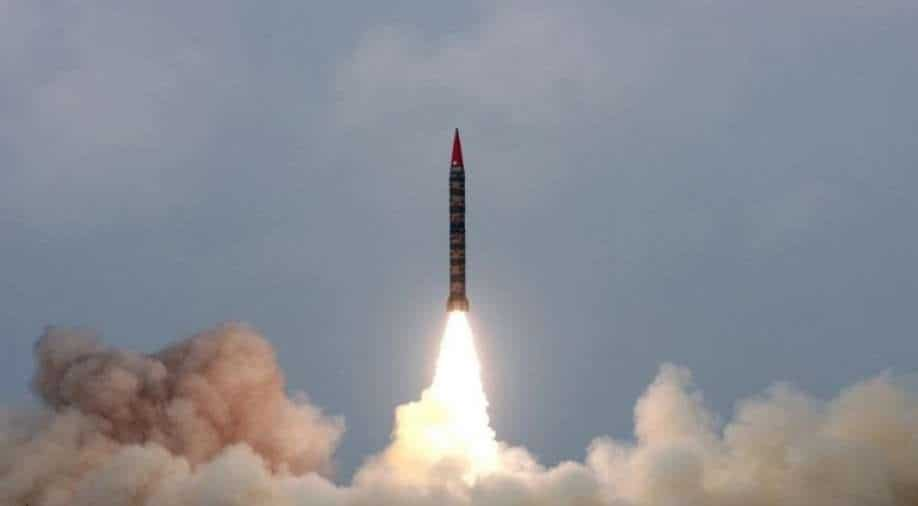Here are the nuclear capabilities possessed by India and Pakistan
India's defence ministry said a missile had been accidentally fired into neighbouring Pakistan after a "technical malfunction", putting the spotlight once again on the nuclear arsenals of the South Asian arch-rivals. Let's take a look at their nuclear capabilities:
India and Pakistan's nuclear arsenals
Both countries possess nuclear arsenals of comparable size. Pakistan holds about 100–120 nuclear weapons, which can be delivered by aircraft and land-based missiles, while India's nuclear arsenal is around 90-110 nuclear weapons, according to estimates by the Stockholm International Peace Research Institute.
Of the world's nine nuclear-armed countries, India and Pakistan are also among the handful that have been increasing their nuclear warhead stockpiles, according to the Federation of American Scientists (FAS).
(Photograph:PTI)
Pakistan nuclear weapons
India tested a nuclear explosive device for the first time in 1974, which then pushed Pakistan to speed up work on its own secret programme.
Both countries, which publicly demonstrated their nuclear weapon capabilities in tit-for-tat tests in May 1998, haven't signed on to the Non-Proliferation Treaty (NPT).
The NPT, which took effect in 1970, is aimed at halting the spread of nuclear weapons-making capability and is signed by around 190 countries.
"Pakistan is expanding its nuclear arsenal faster than any other country and developing new delivery systems," ACA said in a March 2022 briefing on Pakistan's nuclear weapons.
(Photograph:AFP)
India and Pakistan's nuclear arsenals
Pakistan's nuclear delivery systems include at least four short-range and two medium-range ballistic missiles, according to the U.S.-based Arms Control Association (ACA).
Several more missiles, including an intercontinental ballistic missile (ICBM) with a range of 7,000 kilometres, are under development.
India, which is also developing two intercontinental ballistic missiles, already has a intermediate-range ballistic missile that can deliver a single warhead over 3,000 km, according to the ACA.
India's other delivery systems include multiple nuclear-capable short and medium ballistic missiles, which are under the control of its Strategic Forces Command.
Indian nuclear delivery systems also feature a land-attack cruise missile called BrahMos, which was jointly developed with Russia and has an estimated range of 300-500 km.
Unlike Pakistan, however, India has a nuclear-powered ballistic missile submarine that completes its "nuclear triad" – the ability to launch nuclear strikes by land, air and sea.
Both countries have a range of aircraft available for potential nuclear payload delivery.
(Photograph:PTI)
India and Pakistan's nuclear arsenals
India is committed to a nuclear doctrine of "no first use", meaning it has pledged not to strike first, but will maintain what it describes as a "credible minimum deterrence", allowing the country to retaliate and cause massive damage.
India has also said it won't use a nuclear weapon against a non-nuclear weapon state, according to diplomatic statements.
Pakistan has pledged "no first use" against a non-nuclear weapons state, but its policy on first use against countries that have nuclear weapons - particularly India - remains vague, according to the ACA.
